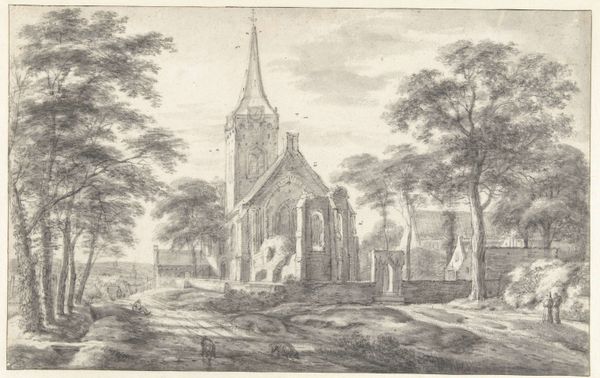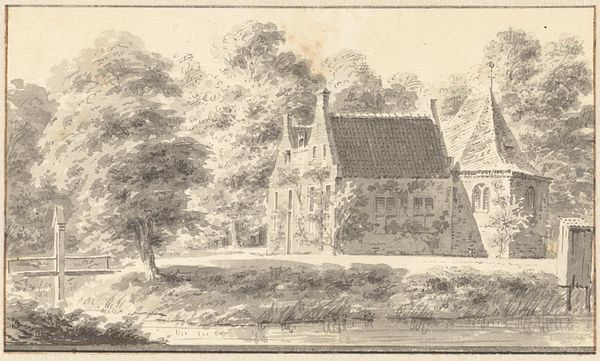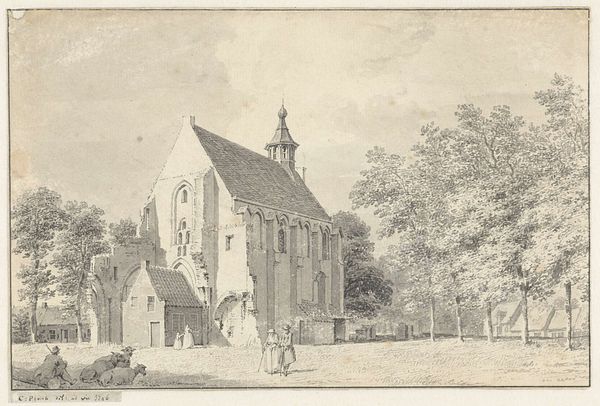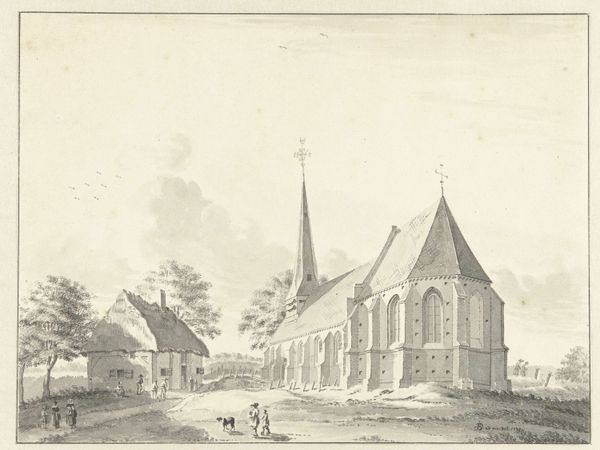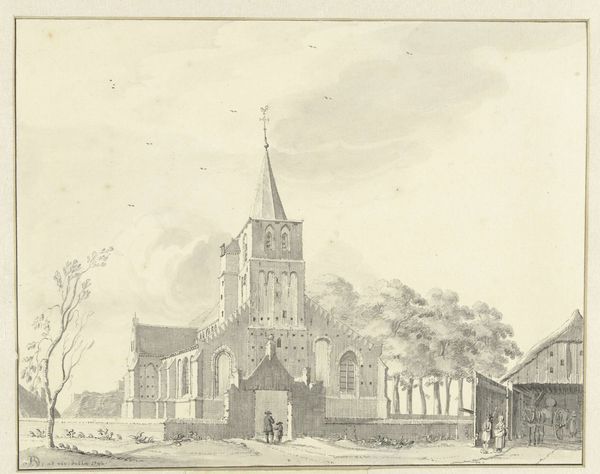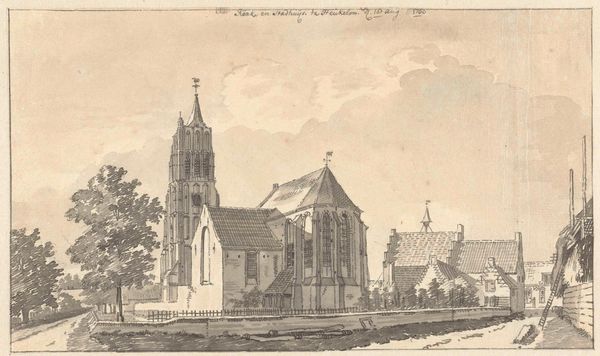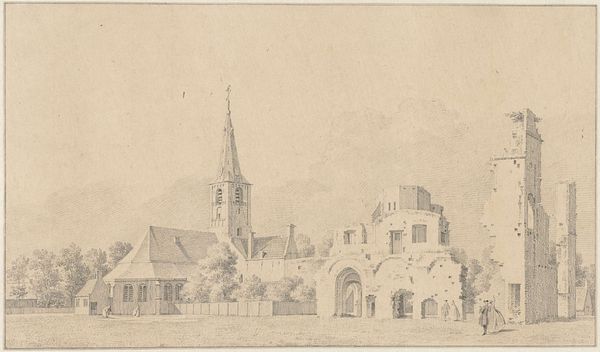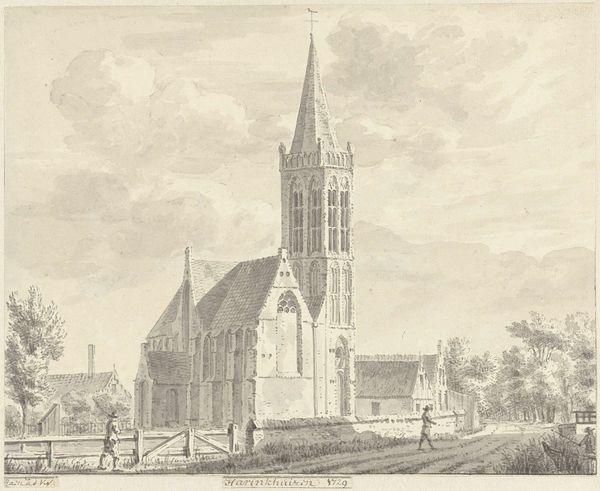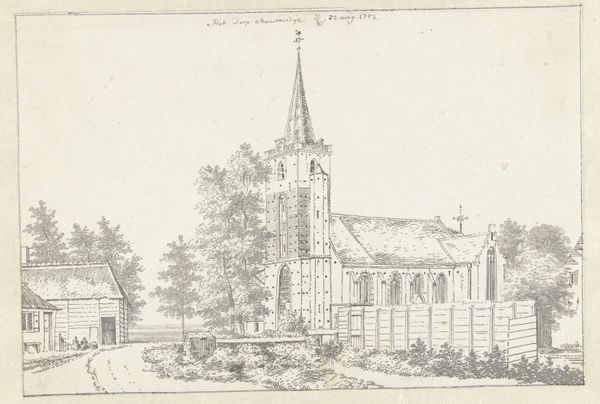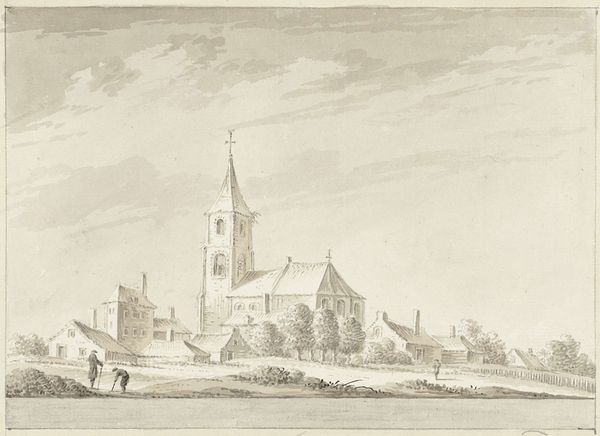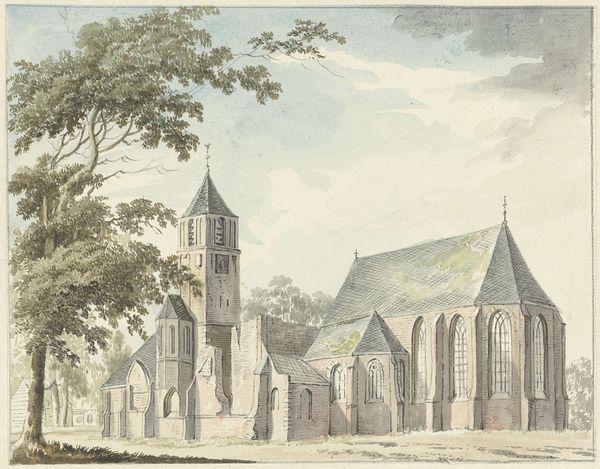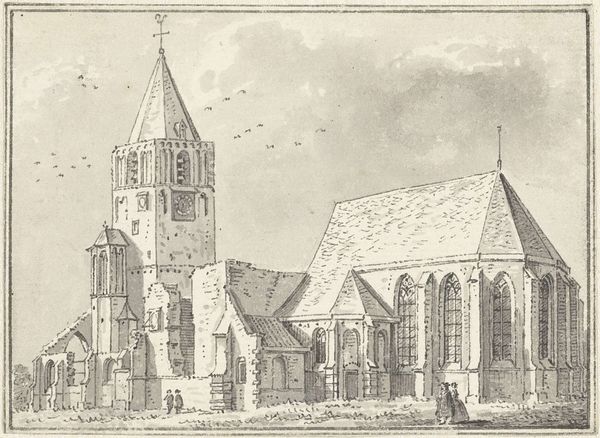
drawing, ink, pen, architecture
#
architectural sketch
#
landscape illustration sketch
#
drawing
#
aged paper
#
mechanical pen drawing
#
old engraving style
#
landscape
#
etching
#
ink
#
pen-ink sketch
#
architectural drawing
#
pen work
#
architecture drawing
#
pen
#
academic-art
#
architecture
Dimensions: height 143 mm, width 209 mm
Copyright: Rijks Museum: Open Domain
Curator: This pen and ink drawing, dating from 1743, is titled "De kapel aan de Haar," created by Hendrik de Winter. You can find it here at the Rijksmuseum. What's your first impression? Editor: There's a sense of melancholy; the delicate lines suggest a passage of time, the fragility of memory. That figure standing by the road seems pensive, almost dwarfed by the weight of the building's history. Curator: It’s fascinating to observe how de Winter combined ink and pen to achieve such nuances of tone. The texture of the paper itself also plays a vital role. Notice how the ink settles unevenly across its aged surface. It's not just an image of a chapel, but also an index of the labor involved in its creation. Editor: I see what you mean about the surface; it gives a raw quality, appropriate for something that evokes this powerful feeling of age. What symbols do you read in it, if any? Does the ruined chapel hold significance? Curator: Absolutely. Consider that ruined structure to the right. That suggests shifts in power dynamics of the time, perhaps the decline of certain religious institutions as materials once allocated for devotional architecture found other uses. Editor: Or perhaps the universality of decay. Architectural ruins often function as vanitas symbols – memento mori. Even sacred spaces succumb to time. Note the presence of the figure on the road – does he embody Everyman contemplating faith and mortality in equal measure? Curator: A good question. I would be keen to understand what the pen strokes tell us. Were they quick gestures made on location or meticulous renderings back in a studio? What of the economics of paper production at the time and distribution channels to allow an artist to produce and trade this work. The making, the tools, and the act of observation feel especially present here. Editor: It does raise these material and socioeconomic factors, alongside the echoes of history, belief, and the quiet contemplation of life's ephemerality that images like these conjure. Curator: Looking at the landscape and the built structure, I'm thinking how much they've been transformed since this sketch. How did this kind of landscape contribute towards what it means to be Dutch in the period. Editor: A sobering but beautifully rendered reminder that all things pass. The symbols resonate across centuries; I like that pairing of a real, once-functioning building, rendered as both record and as something elegiac.
Comments
No comments
Be the first to comment and join the conversation on the ultimate creative platform.

